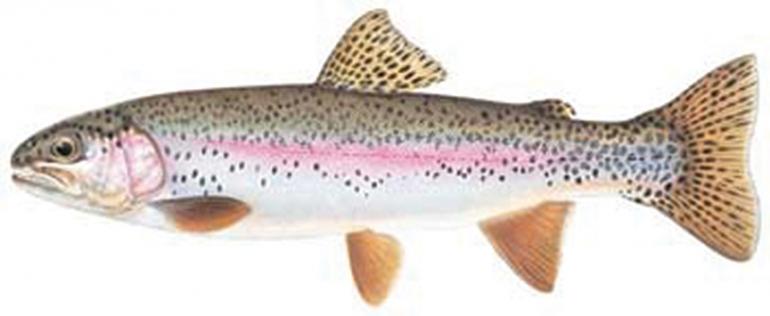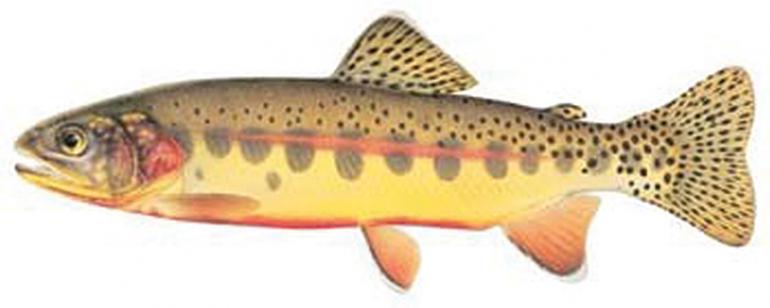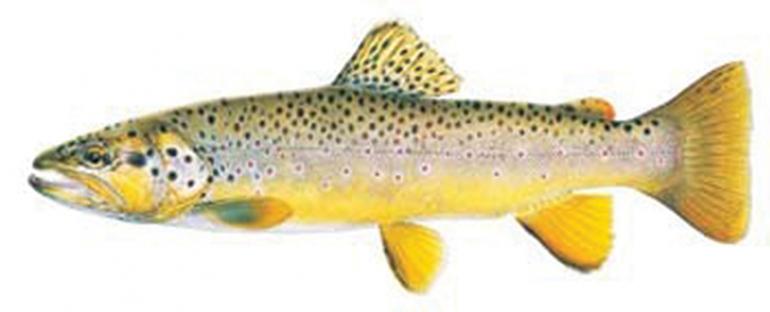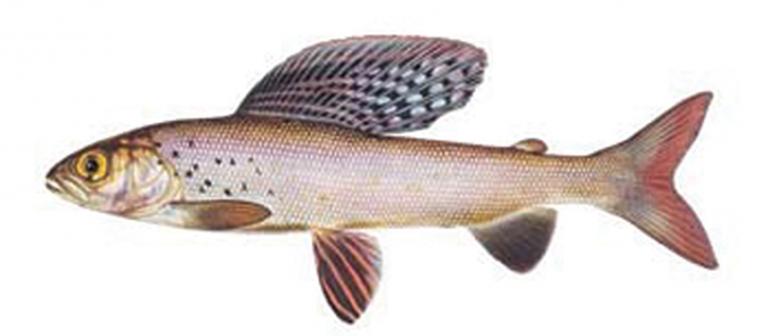Aquatic A-List
A rundown of Montana's trout.
For most fisher folk in the US, trout and Montana seem to naturally go together. But amazingly enough, most people are pretty naïve about the different kinds of trout we have here. All trout are in the family Salmonidae. In general, all “salmonids” are non-spiny, ray-finned fish that also have an adipose fin on their back, which is a small, soft, fleshy fin located between the main dorsal fin and the tail (caudal) fin. Trout are also classified by their habitat: preferably cold, clear water. Southwest Montana’s native salmonids include arctic grayling, westslope cutthroat, Yellowstone cutthroat, and mountain whitefish.
Rainbow Trout: Oncorhynchus mykiss
Without a doubt our most popular game fish, the rainbow trout is native to the Pacific Coast from California all the way up to Alaska. Rainbows can be considered the “chicken of the freshwater fish world.” The species has been planted in freshwater streams and lakes around the world. Rainbow trout are particularly popular to fight and catch since they often jump clear out of the water.
Cutthroat Trout: Oncorhynchus clarkii
Cutthroats are often known to be fairly gullible and easy to catch, but the fact that they are native and inhabit many fast-moving rivers and streams definitely puts them in the “trophy” class. It’s important to consider that in the areas they still survive, the feeding season is very short. For these guys, there is no messing around.
Eastern Brook Trout: Salvelinus fontinalis
The Eastern brook is a very colorful fish, with hues ranging from olive green to dark brown, a silver belly, and light spotting. Unlike the “freestone river” cutthroat and rainbow, they are more inclined to be found in slower, often-vegetated water with a finer sand or gravel bottom. They prefer cover and a shaded habitat. “Brookies” have been introduced to many mountain lakes and streams, and may become stunted through mutual competition for food.
Golden Trout: Oncorhynchus aguabonita
It is safe to say the golden trout is considered the most beautiful of all the trout species—their entire body is a myriad of color. Originally from California, golden trout have been planted in several alpine lakes of Montana. The Beartooth Range is one of the best areas to search for them, and the hikes to the lakes can be as spectacular as the fish. Mid-July is your best bet, and if you hit the spring spawing period, you’ll have the best luck fishing by a lake’s inlet or outlet. This would likely be a trophy fishing trip for this particular species.
Brown Trout: Salmo trutta
Browns are known to go to deep water, particularly as they age. In reservoirs and lakes, they can be very difficult to catch. As brown trout age, they feed more on larger prey, such as other fish. For the larger trout enthusiast, big-river browns—particularly during the fall spawning period—are a popular target.
Arctic Grayling: Thymallus arcticus
The Arctic grayling deserve mention—not only because they are native and have a beautiful, sail-like dorsal fin, but also because they still survive in Montana. The local population still exists, but its habitat alteration has had a severe impact. In recent years, land owners, state/federal land managers, biologists, and conservation organizations have made great strides in cooperating to save this species in its wild habitat. Planted populations of graylings do exist in high-elevation lakes, so they can be legitimately fished for in Montana.
Ken Sinay is the director of Yellowstone Safari Company in Bozeman.
















